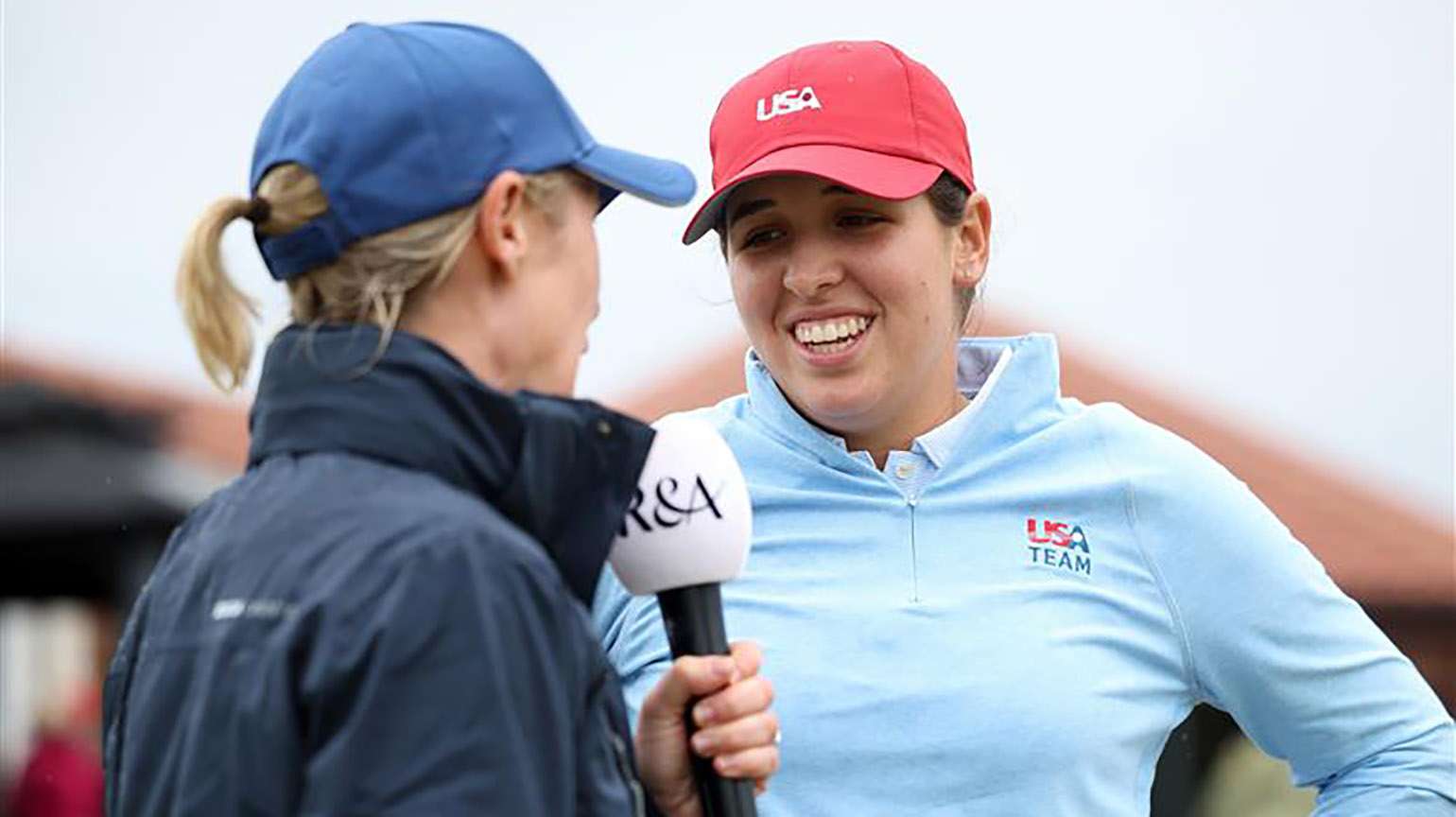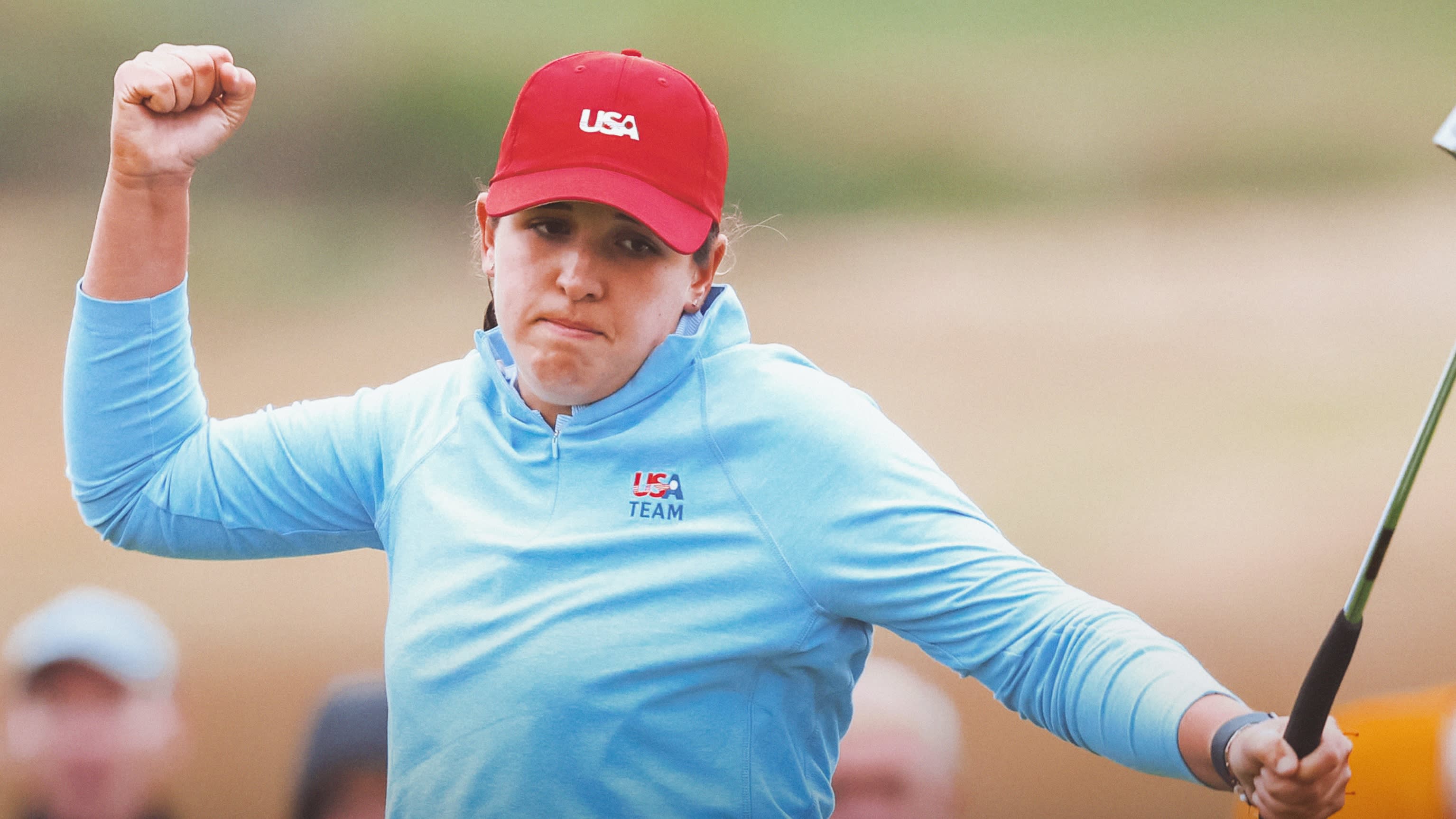Farah O’Keefe: On Par with Greatness
Farah O’Keefe, of Austin, Texas, made her second U.S. Women’s Open appearance last month, finishing tied for 36th at Erin Hills after sharing medalist honors at the New Smyrna Beach, Fla., qualifier. Shortly after the U.S. Women’s Open, she traveled with the U.S. National Development Program (USNDP) to the Women’s Amateur Championship conducted by The R&A at Nairn Golf Club, in Scotland, where she lost in the 36-hole final, 2 and 1, to Stanford University All-American and fellow U.S. Women’s Open qualifier Paula Martin Sampedro, of Spain.
The rising junior at the University of Texas and member of the USNDP Elite Amateur Program boasts an impressive résumé of accolades. She was the 2024 Big 12 Conference Player of the Year and Freshman of the Year. Prior to competing at Texas, O'Keefe qualified for match play at the 2022 U.S. Girls' Junior and then reached the quarterfinals the following year. She advanced to the Round of 16 of the 2024 U.S. Women's Amateur. She also tied for seventh in the 2022 Texas Women's Open and won the 2022 Texas University Interscholastic League (UIL) state individual title. O'Keefe was the runner-up in the 2025 Southeastern Conference Championship, one of seven top-10 results this past season.
USGA summer intern Taylar Paige chatted with O’Keefe about her U.S. Women’s Open experience and impressive run at the Women’s Amateur.
Question: You recently competed at Erin Hills. What was that experience like for you?
O’Keefe: This was my second U.S. Women’s Open, and I felt a little more prepared. I mean, it was hard. The first few days I felt like the course played a lot easier, but when we got to the weekend, it was firm and fast -- typical U.S. Open. It was a great learning experience, and everything outside of golf was just unbelievable. I mean, the USGA just does it right. It was great to be able to chat with the people who were running the championship and tell them how grateful I am for giving this opportunity to amateurs. The amateur dinner is also special because it’s rare to have 20 or 25 amateurs qualify. I mean, that’s why I play the qualifiers every year, because I want to get back to that. It's just a lot of fun.
Question: What did you bring to Erin Hills that you learned from your first Women’s Open in 2023 at Pebble Beach Golf Links?
O’Keefe: When I qualified in 2023, I jumped a little early at it by inviting my whole team. I invited all of my coaches and family, and I think it created a lot of distractions for me. I think the U.S. Women’s Open is the most prestigious women’s major because it’s so well-known and widely watched, especially in 2023, when it was held for the first time at Pebble Beach. I was barely out of high school sneaking under the radar but could still feel it, how special that moment was at Pebble. After I put two balls in the water that Friday, I freaked out and panicked. I ended up playing the back nine terribly because I kept thinking, "Oh, I'm not going to make the cut." From then I realized that Fridays are always going to be a little bit nervy trying to make that cut, especially at a major. I think I just took a lot away in terms of how to manage myself coming down the stretch -- pretending there’s no cut and just focusing on playing solid golf. My dad [Mike O’Keefe] caddied for me in 2023, and he felt he did a bad job caddieing, like he didn’t step in at the right moments. So, for both of us as a team, it was a really good learning experience figuring out how to navigate major championships. It was also about understanding course management, your mental game, and the distractions that come off the golf course because that's not something you get in junior golf. In junior golf, it’s just you and your parents. Then suddenly, you’re on the big stage and there are like 100 other people who want your attention. It’s kind of like, “Okay, how do I balance all of this?”
Question: Who was on your bag at Erin Hills?
O’Keefe: My dad [Mike O’Keefe]. This time we had a more squared game plan. We were settled at the beginning of the week on Monday, instead of ready to go on Thursday. We weren't trying to figure out what we were doing on the golf course while we were playing the championship. We had lines off of every tee and knew where I needed to hit it off of certain pin locations. We were really just managing the misses.
Question: Your dad played professional tennis and rugby, has his professional career inspired yours? Do you feel like the sport/competitive gene runs well into the family?
O’Keefe: It definitely runs in the family because my brother plays football, and he's getting recruited to go play college football right now. He has visited like ten schools, so we're hoping for an offer here soon. He's had a lot of interest from Brown and Yale. I didn’t even know he was that smart to be honest. I guess he's going to go play Ivy League football, which would be really cool. My dad says everything he's taught my brother and I have come from all his failures. He describes himself as a failed tennis and rugby player. In my eyes, I don't see him as a failed player. He got injured and life happened. Now he's teaching tennis and has a career out of it. He describes it as having the talent but not understanding how he was supposed to get there.
Question: Congratulations on making it to the championship match of the Women’s Amateur at Nairn. You played really solid golf. Can you walk me through the week, how you prepared for match play and what your main goals were?
O’Keefe: When I got the call to see if I was interested in going to Scotland around February, my response was “Well, if I qualify for the U.S. Women’s Open I probably won't play, because I would be going four weeks in a row and that just seems like a lot on my schedule.” April came around and I qualified for the U.S. Women’s Open. My dad said I should totally go because I’ll get to hang out with the USA [National Development] Team and coaches. He was like “You don't even need to play that well just go have a fun week.” I called Coach [Chris] Zambri and [coach] Tiff Joh and said, “It's go time let's do this.” I played NCAA D1 Nationals [in Carlsbad, Calif.], the U.S. Women’s Open, Arnold Palmer Cup [in South Carolina] and then flew to Scotland.
I got to Scotland and was exhausted. The first thing I did was go to the driving range. Play started and I just took it one match at a time, trying to get as much match play experience as I could. I won my semifinal match being 4 down with 5 left to play. In the championship match [against Paula Martin Sampedro], I shot a bogey-free 5-under [67] on the first 18, which almost never happens in match play and we were still all square. That's when it kind of hit me, I was like, “Wow, I'm one of two golfers left playing.”
Question: Who did you play in the semifinals?
O’Keefe: Tillie Claggett. We grew up playing junior golf together. I never thought I would end up playing her. We've played so much golf together and we’re friends. I kind of felt bad that I came back after being 4 down and beat her.
Question: Describe how you approached the 36-hole final against Paula. What emotions were rushing through your head and what were your strategies?
O’Keefe: When I found out I was playing Paula I was kind of excited because I've played some college golf with her. I knew I was going to have to play some solid golf to stand a chance. Going into that match was so sudden for me. I went from having to battle a huge comeback [being 4 down with 5 left to play against Claggett in the semifinals] to suddenly having to wake up the next morning and play a final. I had the mentality of “If I could just make zero mistakes, I would be giving myself a chance." My caddie [a member at Nairn] and I that week really bonded. He was a special guy. He normally caddies for players on the weekends, and when they hit a good shot, he gives them a shot of whiskey. Obviously, he couldn’t do that for me, so he gave me candy instead. He called them “sweeties.” I wouldn't have made it that far without him on the bag. He directed me around the golf course, I just hit the ball where he told me to.
It didn't feel like I was under par, it felt like I was just hanging with Paula. We got to the second 18 and she started off hot and I made a couple of mistakes. After I made those mistakes, I could never really get it back, she played so solid. I watched some of the replay on YouTube and it was pretty entertaining golf watching the shots. Just the golf being played was really exciting. I guess I have to go back and play again next year.
Question: Which part of your game do you think really shined during the championship?
O’Keefe: It was really my iron play and short game. That’s what got me that far. I was also never that far away from the hole.
Question: What are your biggest takeaways from the week?
O’Keefe: I was most proud of my ability to stay present and within myself. There were so many times when I could have gotten ahead of myself or gotten upset over a bad shot. I felt like I didn't do that until the end of the championship match.
Question: You are a part of our Elite Amateur Program. How has your experience been so far? How has USNDP helped your game or contributed to your success on the course?
O’Keefe: It's been incredible. It's such a special opportunity that the USGA has provided through USNDP. They’ve created an opportunity for the top American players to come together, which is really cool. It doesn't happen all the time where we're all in the same place. It also provides financial support in terms of getting to play events like the British Am. To have that level of representation for the United States of America in foreign countries is incredible, especially on the women’s side. There's a gap in professional golf. You look at the amateur rankings and there are 10 American players in the top 50 in the world. Then you look at the professional rankings and there are like five American players at the top. There is a discrepancy in amateur and professional golf on the American side, and I think that's because they didn't have a development program. The USGA has identified that. Now, there are so many opportunities and pathways for juniors to get better faster. For me, it's been a way to get more notoriety. For the USGA to handpick these players and have them under its umbrella is massive. The USGA is already a blue-chip brand, and having the opportunity to align yourself with that reputation is huge. It's cool to be able to represent your country. It's something that you grow up wanting to do. You want to wear the red, white, and blue.
Question: What advice would you give someone trying to follow in your footsteps and to your younger self?
O’Keefe: It won’t happen overnight, and if you try to force things to happen or wins to come your way, it more than likely won’t happen. You have to remember that your main goal is to get better every time you go to the course. It's not so much about winning, but that you love the game. My biggest piece of advice would be to fall in love with the game and never lose sight of the fact that's why you play.
Question: Where do you see your golf career in the future? Do you have any big dreams or goals?
O’Keefe: I always have big dreams and goals. I want to play professionally, win major championships, and be a Hall of Famer. If you don't have big goals, it's hard to be motivated every day. I just want to play at the highest level that I possibly can and that's what I'm chasing every day.














